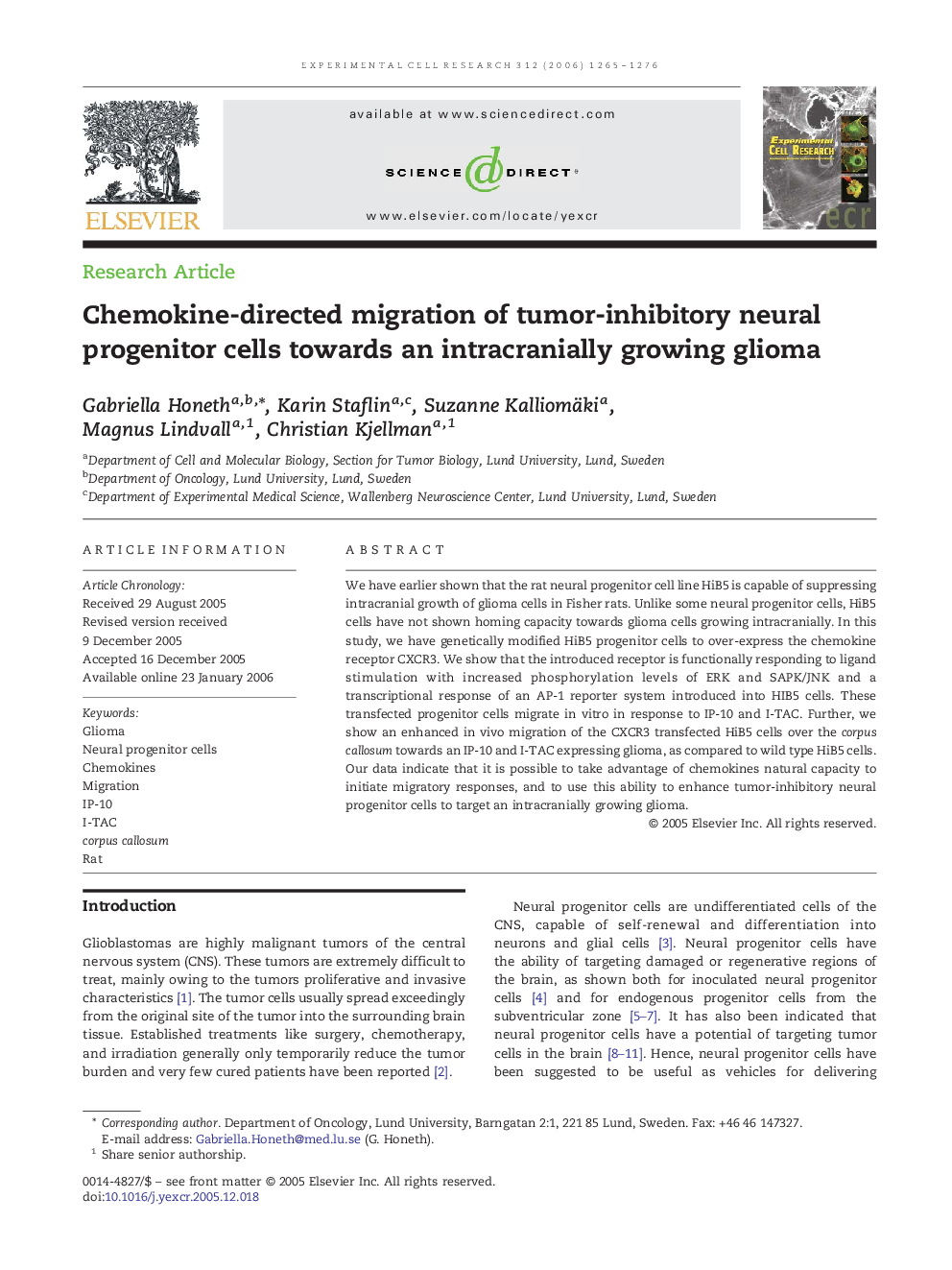| Article ID | Journal | Published Year | Pages | File Type |
|---|---|---|---|---|
| 2132237 | Experimental Cell Research | 2006 | 12 Pages |
We have earlier shown that the rat neural progenitor cell line HiB5 is capable of suppressing intracranial growth of glioma cells in Fisher rats. Unlike some neural progenitor cells, HiB5 cells have not shown homing capacity towards glioma cells growing intracranially. In this study, we have genetically modified HiB5 progenitor cells to over-express the chemokine receptor CXCR3. We show that the introduced receptor is functionally responding to ligand stimulation with increased phosphorylation levels of ERK and SAPK/JNK and a transcriptional response of an AP-1 reporter system introduced into HIB5 cells. These transfected progenitor cells migrate in vitro in response to IP-10 and I-TAC. Further, we show an enhanced in vivo migration of the CXCR3 transfected HiB5 cells over the corpus callosum towards an IP-10 and I-TAC expressing glioma, as compared to wild type HiB5 cells. Our data indicate that it is possible to take advantage of chemokines natural capacity to initiate migratory responses, and to use this ability to enhance tumor-inhibitory neural progenitor cells to target an intracranially growing glioma.
